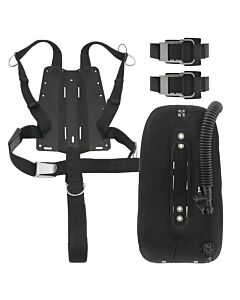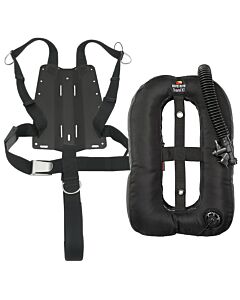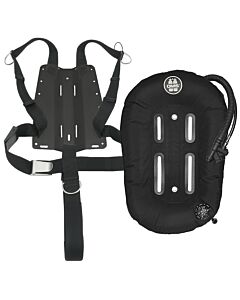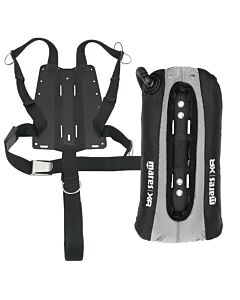Hogarthian
The Hogarthian harness, sometimes called the 'DIR' harness, is a version of the continuous webbing harness with some specific refinements for a minimalist approach to dive gear configuration.
-
 DGX Custom - DGX Gears Singles Harness / Backplate / Wing PackageAs low as $399.00
DGX Custom - DGX Gears Singles Harness / Backplate / Wing PackageAs low as $399.00 -
 DGX Custom - DGX Gears Harness Package - Dive Rite XTAs low as $409.00
DGX Custom - DGX Gears Harness Package - Dive Rite XTAs low as $409.00 -
 DGX Custom - DGX Gears Harness Package - OMSAs low as $439.00
DGX Custom - DGX Gears Harness Package - OMSAs low as $439.00 -
 DGX Custom - DGX Gears Harness Package - Mares XRAs low as $449.00
DGX Custom - DGX Gears Harness Package - Mares XRAs low as $449.00
The Origin of Hogarthian Configuration
The hogarthian equipment configuration is a minimalist approach to dive gear that was originally conceived by Bill Hogarth Main and refined in the 1990's over an enormous body of dives including the cave exploration dives of the Wakulla Karst Plains Project (WKPP). The hogarthian configuration has been incorporated into holistic philosophies of diving such as Doing It Right (DIR) and the curriculum of several dive training agencies. Every piece of equipment has been considered in a synergistic relationship to every other, resulting in a configuration where carefully selected components along with the skills of the diver are integrated into a complete system. There is no latitude for 'personal preference' in the hogarthian configuration. However, refinements continue with benefit of experience, advancements in technology and availability of products tailored for the hogarthian diver. Adopted by exploration divers of all types, many expert divers view the hogarthian configuration as exceptionally streamlined, safe and relatively inexpensive.
The hogarthian equipment configuration is always a balanced rig, meaning the diver is properly weighted with a minimal amount of compensation lift to maintain neutral buoyancy. The balanced hogarthian diver is never so heavy that they require lift from the BC to ascend, and they can always swim to the surface in event of BC failure. The distribution of weight and lift on the hogarthian diver is also balanced in order to be able to easily maintain proper trim. Balance is achieved with a carefully selected combination of the cylinders, backplate, wing, exposure suit and other equipment. The most common configuration is 8-inch diameter steel cylinders with a harness, aluminum plate, wing and a drysuit. Another popular configuration is 7.25-inch diameter aluminum cylinders with a harness, steel backplate, wing and a wetsuit.

